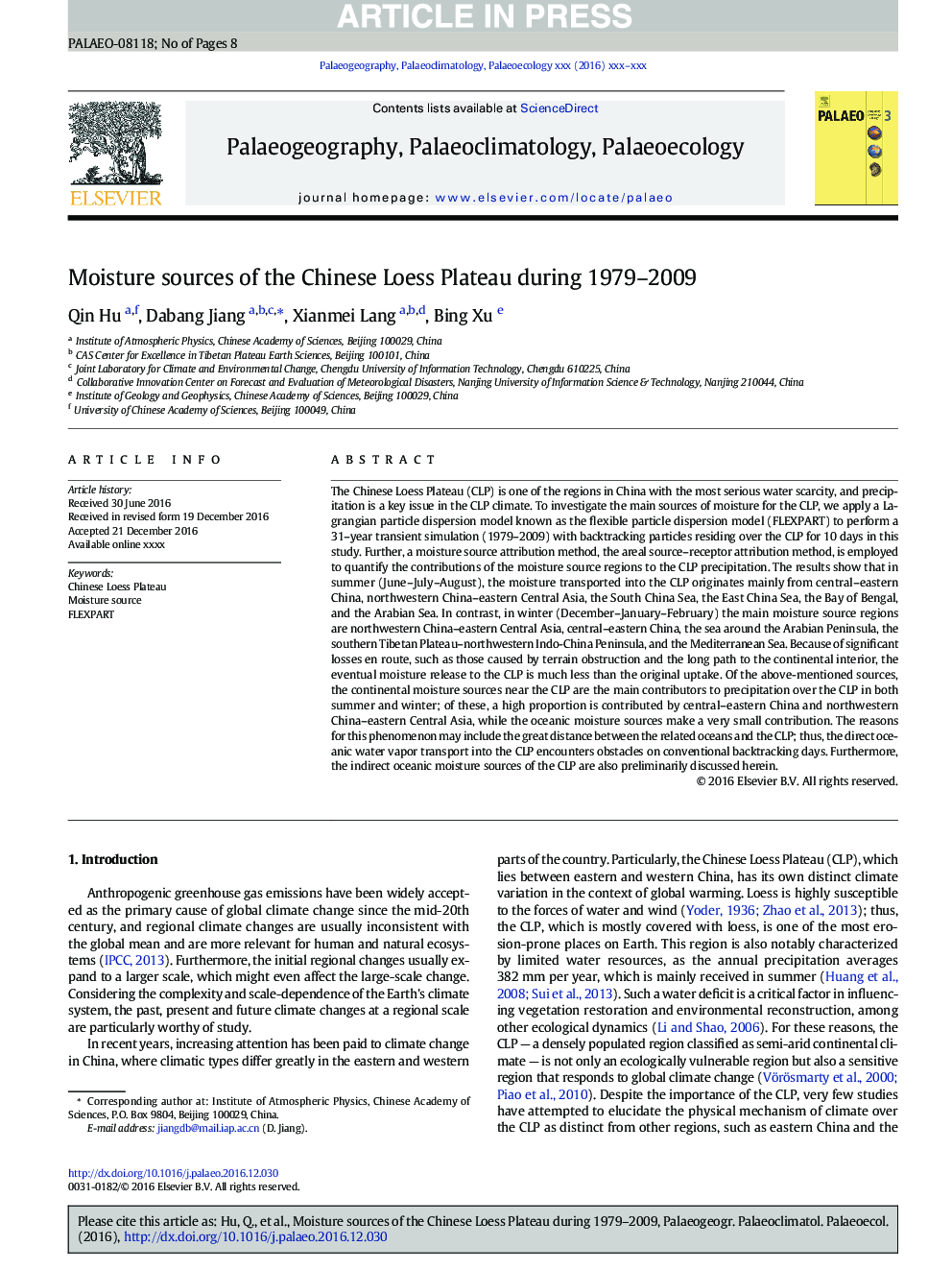| کد مقاله | کد نشریه | سال انتشار | مقاله انگلیسی | نسخه تمام متن |
|---|---|---|---|---|
| 10223636 | 1701039 | 2018 | 8 صفحه PDF | دانلود رایگان |
عنوان انگلیسی مقاله ISI
Moisture sources of the Chinese Loess Plateau during 1979-2009
ترجمه فارسی عنوان
منابع رطوبت صفحات چین لس در طول سال های 1979-2009
دانلود مقاله + سفارش ترجمه
دانلود مقاله ISI انگلیسی
رایگان برای ایرانیان
موضوعات مرتبط
مهندسی و علوم پایه
علوم زمین و سیارات
فرآیندهای سطح زمین
چکیده انگلیسی
The Chinese Loess Plateau (CLP) is one of the regions in China with the most serious water scarcity, and precipitation is a key issue in the CLP climate. To investigate the main sources of moisture for the CLP, we apply a Lagrangian particle dispersion model known as the flexible particle dispersion model (FLEXPART) to perform a 31-year transient simulation (1979-2009) with backtracking particles residing over the CLP for 10Â days in this study. Further, a moisture source attribution method, the areal source-receptor attribution method, is employed to quantify the contributions of the moisture source regions to the CLP precipitation. The results show that in summer (June-July-August), the moisture transported into the CLP originates mainly from central-eastern China, northwestern China-eastern Central Asia, the South China Sea, the East China Sea, the Bay of Bengal, and the Arabian Sea. In contrast, in winter (December-January-February) the main moisture source regions are northwestern China-eastern Central Asia, central-eastern China, the sea around the Arabian Peninsula, the southern Tibetan Plateau-northwestern Indo-China Peninsula, and the Mediterranean Sea. Because of significant losses en route, such as those caused by terrain obstruction and the long path to the continental interior, the eventual moisture release to the CLP is much less than the original uptake. Of the above-mentioned sources, the continental moisture sources near the CLP are the main contributors to precipitation over the CLP in both summer and winter; of these, a high proportion is contributed by central-eastern China and northwestern China-eastern Central Asia, while the oceanic moisture sources make a very small contribution. The reasons for this phenomenon may include the great distance between the related oceans and the CLP; thus, the direct oceanic water vapor transport into the CLP encounters obstacles on conventional backtracking days. Furthermore, the indirect oceanic moisture sources of the CLP are also preliminarily discussed herein.
ناشر
Database: Elsevier - ScienceDirect (ساینس دایرکت)
Journal: Palaeogeography, Palaeoclimatology, Palaeoecology - Volume 509, 15 November 2018, Pages 156-163
Journal: Palaeogeography, Palaeoclimatology, Palaeoecology - Volume 509, 15 November 2018, Pages 156-163
نویسندگان
Qin Hu, Dabang Jiang, Xianmei Lang, Bing Xu,
